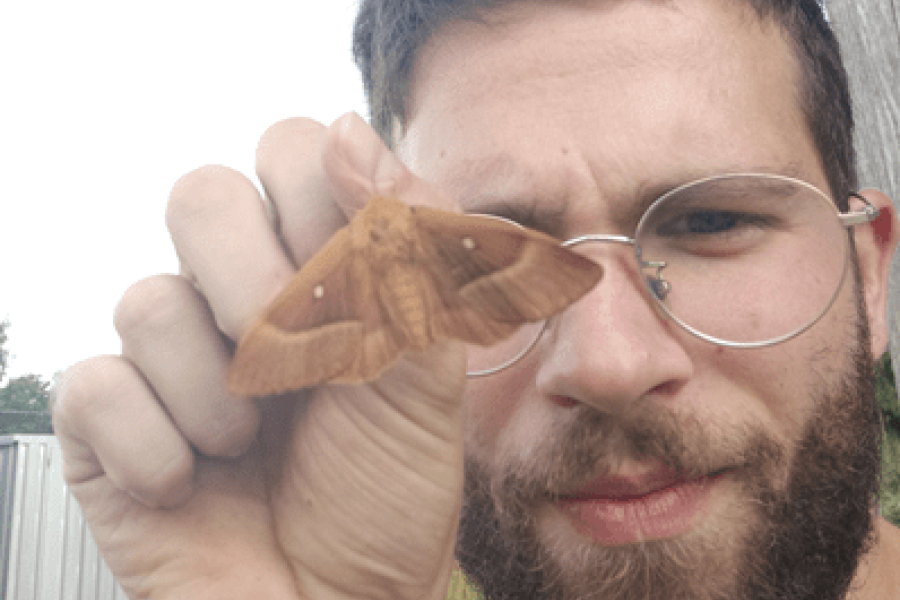Insects in the spotlight: Gabriel studies the impact of light at night on the clocks and behavior of insects

Gabriel Charvalakis has recently started his PhD research at the Netherlands Institute for Ecology (NIOO-KNAW) in Wageningen and the University of Groningen. Under supervision of dr. ir. Kamiel Spoelstra and dr. Roelof Hut, he investigates all aspects of light that may have an influence on insects. The number of insects is decreasing rapidly, and one of the reasons may be the enormous amount of light pollution worldwide. Can we adjust the color or intensity of lights in order to save insects? Gabriel introduces himself below.

Who are you?
My name is Gavriil (Gabriel)- Angelos- Charvalakis and I was born in Attica in Greece. In my free time I enjoy various activities: dancing, drawing , calisthenics training at the local park. A walk in the woods always helps in clearing my mind and offers the chance to observe all kinds of lifeforms! Sometimes I enjoy collecting mosses in order to build indoor terraria: miniature indoor enclosed ecosystems!
What is your background?
I obtained my first MSc degree in Plant Science at the Agricultural University of Athens. Yet, biodiversity is facing severe consequences due to anthropogenic factors and I quickly realized that I was interested in studying the everchanging complexity of ecosystems. Thus, I also studied Biology at Wageningen University & Research here in the Netherlands and specialized in a “Biodiversity & Ecology” MSc degree. During my studies in Wageningen I learned: i) How the chemical ecology of insects shapes trophic systems and ecosystem functions ii) Which are the neurobiological mechanisms affecting the chemical ecology of insects. After my studies I continued exploring the amazing sensory systems of insects as an entrepreneur within the Wageningen StartHub.
What is your project about?
For my project I will be aiming to link the behaviors of insects in response to light at night, with their corresponding sensory ecology. Specifically, I will be looking at how light characteristics such as light intensity and spectrum affect insect behavior and circadian rhythms. By utilizing light emitting diode (LED) technology we can carefully tune light characteristics (wavelength/intensity) and potentially mitigate the impact of light pollution on insects!
When did you first hear about the biological clock?
The field of chronobiology firstly revealed itself while I was studying Plant Sciences in Greece. It is astonishing how plants utilize phytochrome photoreceptors to detect light and regulate various important synchronicities. For example, different plants from different parts of the word demonstrate different photoperiodism and therefore flower at different times!
What is something that people should know about you?
How do you call a female moth that recently laid eggs?
A MOTHer.
To contact Gabriel: g.charvalakis@nioo.knaw.nl

The BioClock Consortium is funded by the NWA-ORC programme of the Dutch Research Council (NWO; project number 1292.19.077).